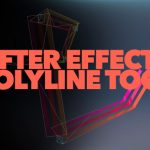Autodesk announced a brand new 3ds Max at NAB 2015 recently. 3ds Max sports some huge new features, one of them being the max creation graph.
Max Creation Graph editor enables users to create modifiers, geometry, and utility plug-ins using a visual node-based workflow.
The Max Creation Graph allows you tho create new plugins for 3ds MAX easily. You can string node based parameters together, computational nodes, and output nodes to quickly create new tools.
The resulting graph can be packaged with any .maxcompound which can easily be shared with other 3ds Max users.
For the most part the new Max Creation Graph is a visual programming language at heart. Nodes can perform a transformation on data that flows through input connections and output the result to the output “value” connection.
Autodesk’s Christopher Diggins notes that “Despite the title of the original request on user feedback (which you might notice was first suggested by Martin Coven before we hired him, I’m sure he is glad to finally get his votes back) and the obvious similarities this is not an integration of Softimage ICE in 3ds Max.”
Max Creation Graph is a new visual programming language that is built on top of the .NET framework, and is similar to Autodesk Dynamo. Max Creation Graph and Dynamo both are easy to extend using .NET and supports some functional programming concepts, but Dynamo is an interpretive language, not complied language.
With Max Creation Graph you can create a new plug-in for 3ds Max in minutes by simply wiring together parameter nodes, computation nodes, and output nodes.
Other New Features Slated for 3ds Max 2016 Include:
- New Max Creation Graph: A new node-based content and tool creation toolkit integrated by user request. Empowers users to extend 3ds Max with geometric objects and modifiers. Users can package graphs and share them with other users.
- New XRef Renovations: Externally reference objects to scenes and animate/edit material on the XRef object in the source file without having to merge the object into the scene, non-destructive animation workflows and improved XRef stability simplify collaboration among teams and throughout the production pipeline.
- New intuitive Design Workspace and Template Systems: The Design Workspace provides easy access to object placement, lighting, rendering, modeling and texturing tools to create high-quality stills and animations; built-in settings for rendering, environments, lighting and units.
- 3ds Max and 3ds Max Design are coming together.
Check out Autodesk Area for more information on what is new in 3ds Max 2016.


